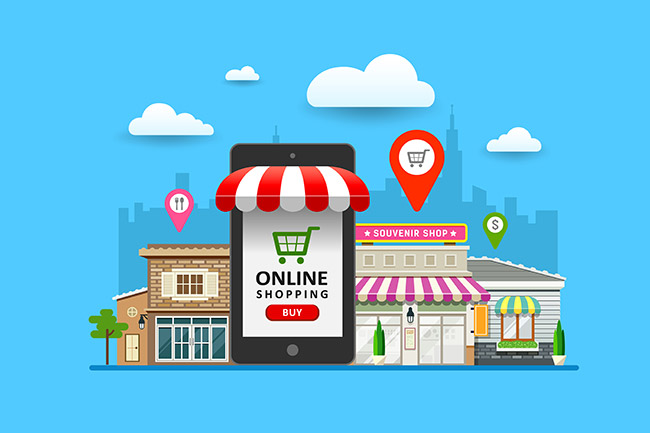
Interesting E-commerce Trends for Online Sellers
The first item ever ordered online on Amazon was a book in 1995. After 20 years, the e-commerce industry has generated over 2 trillion dollars in global sales. There’s no going back now.
E-commerce has transformed retail. It has evolved to meet people’s changing needs and make online shopping more convenient for today’s customers. When it first began, e-commerce capabilities were relatively limited. But that is no longer the case. Whether it’s customizing products, improving return policies, or improving integration, all of these changes (among other things) have swept the e-commerce world. And now, in the year 2021, the world of e-commerce will be transformed further.
Given the effects of COVID, the year 2020 was a huge year for e-commerce. The pandemic has accelerated changes in several verticals, and this trend is expected to continue in some form into 2021 and beyond.
Importance of E-commerce trend
The e-commerce industry is becoming more competitive. E-commerce trends must be constantly monitored to stay ahead of the competition. If you don’t keep up with them, you risk falling behind regardless of how advanced your e-commerce store is. To ensure future success, you must keep looking ahead. In 2021, you need to be aware of these trends to capitalize on them. That is why it is critical to analyze and capitalize on e-commerce trends as soon as possible. This way, you can propel your e-commerce brand forward and stay ahead of the competition.
Top E-commerce trends in 2021
If you want to gain more traction for your e-commerce business, drive more traffic, and convert that traffic into paying customers, you need to be aware of the latest industry trends. Here are 10 E-commerce trends that every seller should be aware of in 2021.
1. Online Sales Growth is Unstoppable
E-commerce sales have been regularly increasing and there is a good reason for that. One of the most popular online activities is shopping. In 2021, global e-commerce sales are expected to grow by 26.7 percent year over year to $4.891 trillion (eMarketer, 2021). That’s not all, though. Online sales are expected to reach $6.388 trillion, nearly twice the amount of total e-commerce sales in 2019.
Although online shopping is one of the most popular online activities, its popularity varies by region. A growing number of people are turning to online shopping as e-commerce stores become more popular. A variety of factors have contributed to the rise in online shopping. One of the most important ones is the level of comfort offered to online shoppers. There is also an increase in online buyers’ trust when making purchases and a better website experience. People used to be hesitant to purchase items online, but this is no longer the case. Websites have also improved their user-friendliness.
With all of the conveniences available, it’s no surprise that online sales are growing at unstoppable rates.
2. Customers Shop In Marketplaces Rather Than E-commerce Stores.
Before 2020, businesses that didn’t even have a website are now online. Consumer behavior, on the other hand, continues to favor convenience. Many newer e-commerce businesses lack the backend infrastructure necessary to handle increased traffic and the current shipping requirements. Companies like Amazon and Walmart, however, have the experience and infrastructure required to satisfy today’s customers. Other niche marketplaces such as Etsy are continuing to expand to meet the needs of new digital entrepreneurs. By listing products on marketplaces, you can diversify your brand and think of it as another channel. While it’s important to establish a digital presence through a website or an e-commerce store, the most important factor is the convenience of your customers.
If you’re just getting started or have a new brand, sell on the top marketplaces in your industry. This way, you can take advantage of these larger companies’ high traffic reach, quick shipping, and overall experience. However, don’t rely solely on these online marketplaces. When you sell your products on sites like Amazon, you don’t own the customer data, limiting your brand’s growth. The solution is to entice people to your website by offering limited-edition products that create a sense of urgency and scarcity.
3. Conduct Robust Customer Research
This e-commerce trend should serve as a cautionary tale. If you haven’t been paying attention to your customers’ needs and wants, now is the time to start. Rapid customer research can help you identify key opportunities for better serving your audience. Essentially, driving customer-centric innovation will be more important this year and beyond than it has ever been. Brands must be laser-focused on the needs of their customers, which means listening to them and using their feedback to improve their concepts. Whether you run your eCommerce business with a remote team or face-to-face meetings, it’s critical to start listening to your customers. They’re the reason you’re a company in the first place, so pay attention to them.
4. Use social media to connect
If your customers are on social media, you should be as well. If you encourage every team member to spread the word via their social profiles, effective social selling can reward your team-building efforts. Successful e-commerce stores operate on various platforms and channels, reaching customers on platforms and channels where they are more relaxed and spend more time. For example, Facebook Shops allows businesses and individuals to create a personalized online storefront to assist customers who want to buy products through the Facebook and Instagram apps. Shopify oversees the checkout. This is a brand-new trend in the e-commerce world where you can benefit from.
5. Mobile Shopping is Growing
The rise of mobile commerce is notable. Total mobile device sales were $2.66 trillion for the year 2020. This figure is expected to increase by 18.8% this year to $3.16 trillion before rising to $3.79 trillion in 2022. (Payvision, 2020). These figures must be taken seriously. Improving the mobile e-commerce experience for customers can be a huge opportunity for businesses.
The increased use of mobile devices has contributed to the growth of e-commerce. That’s because, in addition to shopping online, consumers are using their mobile devices to browse and research before making a purchase decision.
Consumers are becoming more comfortable shopping on mobile devices as their trust in online shopping grows. This is especially true for Millennials and Gen Z consumers, who have grown up with computers and the internet at their fingertips. Compared to older generations, these generations are also more likely to shop online using their mobile devices.
With more and more websites becoming mobile-friendly, make sure that your website and your online store are mobile-friendly. By doing so, you’re making e-commerce easier and more accessible to a wider audience.
6. Business Landscape to Be Changed by Young Consumers
The impact of the coronavirus pandemic on e-commerce is undeniable. Following the coronavirus outbreak, more than half of consumers (54%) increased their online spending. Although consumers of all ages are shifting to online shopping, the younger generation is primarily responsible for this e-commerce trend. According to survey results, two out of every three (68%) young consumers aged 18 to 34 are now spending more money to buy items online than they were before the pandemic (Shopify, 2020). For the older age groups, the growth is a little more subdued. Consumers aged 35 to 54 increased their online shopping spending by 57%, while consumers aged 55 and up only increased their spending by 41%. As an e-commerce business owner, you should target the younger generation in the future to increase your sales potential. Consider stepping up your social media marketing efforts to achieve this. More than half of young consumers who buy from independent brands learn about them through social media, a higher percentage than any other age group.
7. Pay Attention to Categories
In the year 2020, several “pandemic shopping categories” emerged as front-runners. The year was a record-breaker for essential goods, in-home entertainment, and home projects. The grocery category, however, is the most notable. Many stores were already expanding their grocery order pickup and delivery capabilities before the Covid-19 pandemic. It has been a small niche in the grocery industry until recently, but it is growing. However, data shows that the popularity of online grocery shopping exploded during the pandemic. Online grocery sales in the United States totaled $1.2 billion in August 2019. After the pandemic, a massive 79% of US consumers turned to online grocery, bringing the total to $7.2 billion by June 2020.
According to a PwC Global study, 63% of respondents are buying more groceries online or over the phone now than before social distancing, and 86% are likely to continue shopping for groceries online once social distancing measures are removed. Online grocery is expected to maintain its momentum throughout 2021 and beyond, thanks to expanded curbside and delivery options. According to Business Insider, by the end of 2024, online grocery will have reached 55% of US consumers. Online grocery shopping isn’t just for groceries. The ability to add products from other categories to groceries in an online cart (e.g., Walmart.com) has made the shopping experience more convenient and efficient for marketplace customers.
8. There Will Be a Growing Volume of Voice Searches
Not only are there more smart speakers on the market, but people are also relying on voice assistants to complete daily tasks. According to Loop Ventures, by 2025, 75% of US households will own a smart speaker. As more smart speakers are installed in homes, more people will use voice search to shop online, order food, and organize their lives. In terms of keywords and content, the rise of voice search presents an opportunity for e-commerce businesses.
9. AI Helps Shops Learn About Shoppers.
Customers can have automated, personalized shopping experiences thanks to artificial intelligence (AI) and machine learning. AI collects data on how customers shop when they make purchases and what they’re looking for in a product or service regularly. It’s a piece of technology that can’t be replicated in a physical store
10. More Payment Ways
Customers have different payment preferences, and if they can’t pay with their preferred payment method on an e-commerce site, they may cancel a potential sale. Providing a variety of payment options is a good way to boost mobile conversion rates. Customers will be able to checkout even faster the next time they purchase if they can save their payment information on your site. So, there are a lot of new developments in e-commerce. Technology and people are always changing, and because e-commerce connects them all, we’ll always be looking to the future. One thing is certain: it’s never too late to dive right in, learn something new, and see if it’s a good fit for your company. Consumers are in charge for the time being, and e-commerce businesses will tailor the journey ahead for them.



